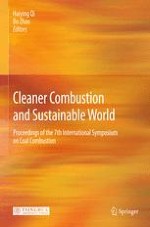2013 | OriginalPaper | Buchkapitel
Mercury Speciation and Fine Particle Size Distribution on Combustion of Chinese Coals
verfasst von : Lei Zhang, Michael Daukoru, Sarah Torkamani, Shuxiao Wang, Jiming Hao, Pratim Biswas
Erschienen in: Cleaner Combustion and Sustainable World
Verlag: Springer Berlin Heidelberg
Aktivieren Sie unsere intelligente Suche, um passende Fachinhalte oder Patente zu finden.
Wählen Sie Textabschnitte aus um mit Künstlicher Intelligenz passenden Patente zu finden. powered by
Markieren Sie Textabschnitte, um KI-gestützt weitere passende Inhalte zu finden. powered by
